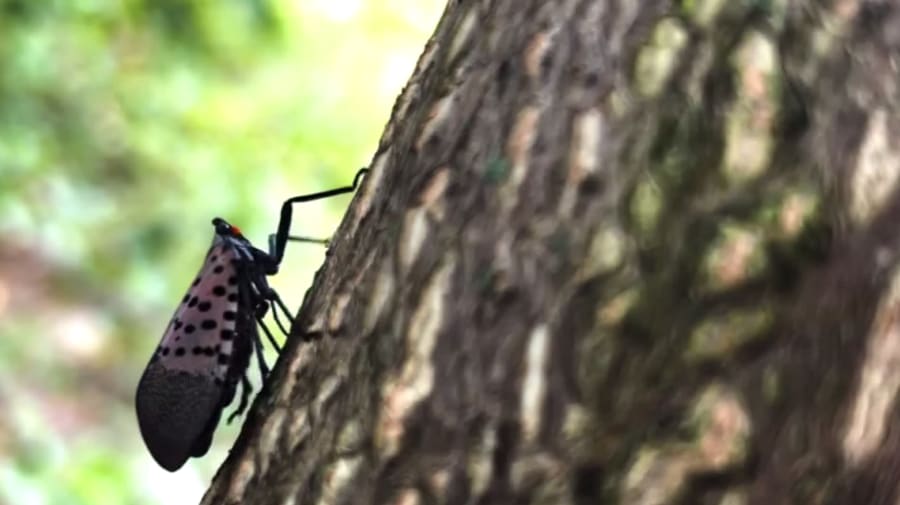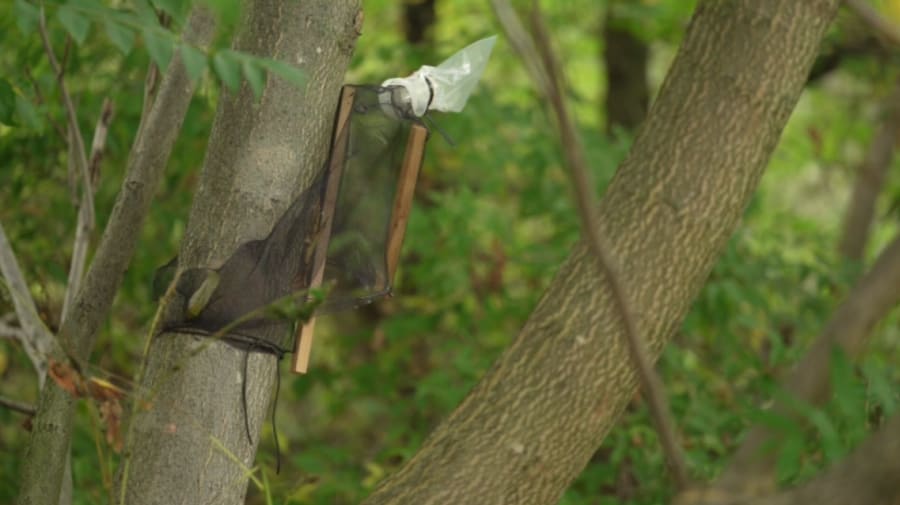Local 4 looks forward to the leaves changing color this time of year, but we must also be aware of invasive species.
The spotted lanternfly is one of Michigan’s least wanted. It does not threaten people but harms our gardens, parks, and farms.
Stories on the spotted lanternfly are the most clicked on our website, so Local 4 investigated further to find out what’s being done to track it.
Michigan’s least wanted is the spotted lanternfly.
Before heading to the heartland, you can see spotted lanternflies covering plants and trees along the eastern seaboard. The invasive species is now mainstream.
“I’m a spotted lanternfly. I don’t care what experts say; I’m going to eat your crops,” said an actor during a Saturday Night Live skit.

Entomologist Linsday Patrick says that’s not what they do, but they’re a nuisance.
It is difficult to eradicate the spotted lanternfly because of the number of the host plants it feeds on. However, entomologists are working on a goal to reduce populations.
Patrick is an invasive species coordinator for the Michigan Department of Agriculture and Rural Development.
We met her in Pontiac at the first site where spotted lanternflies were discovered in Michigan.
They’ve been detected in Oakland, Monroe, and Wayne counties. Although the spotted wings with peeks of red look pretty, don’t be deceived.

Spotted lanternflies feed on more than 70 types of plants and trees. Their favorite is the tree of heaven, an invasive species.
The excretion of sugary substances produces sooty mold, a fungus that stresses the host because it can’t photosynthesize. It also attracts flies, wasps, and yellow jackets.
They’ve been known to kill the vine when they feed off grapevines, so traps have been placed.
“The traps are for monitoring,” Patrick said. “So this trap on the tree is catching any spotted lanternflies that are crawling up the bark. This is a good way to monitor what the population is doing.”

Patrick explained what a trap tree was, meaning it’s treated with insecticide.
The spotted lanternfly’s lifespan is short. Egg masses hatch around late spring/early summer.
The fall is when they lay their egg masses before dying during the first cold snap.
Patrick explained how they’re spreading if they don’t fly well.
“They are hitchhiking as they are being moved by people,” Patrick said.
They lay their egg masses on smooth surfaces like cars, trees, building materials, and chairs.
It’s why there’s the “See it, squish it, report it” campaign.
Remember to snap a photo before the squish and send it in with a report to the Michigan Department of Natural Resources “Eyes in the Field” portal.
The squish may come more easily for others than some.
You need only muster the strength to grab and stomp them, all in the name of preserving Michigan’s wonders and beauty in nature.
Where you see a tree of heaven, you’ll probably also find shaded lanternflies.
The best way to identify this tree is to examine its leaves closely. You’ll see a notch there, but if you break the leaf in half, you’ll smell a foul odor, like rotten peanut butter.




